Welcome to
Make sure your sound is on 
and you will hear Knarf's favorite song.
 |
||||||||||||||||||||||||||||||||
 |
||||||||||||||||||||||||||||||||
|
||||||||||||||||||||||||||||||||
 |
||||||||||||||||||||||||||||||||
|
|
||||||||||||||||||||||||||||||||
|
|
 |
||||||||||||||||||||||||||||||
|
||||||||||||||||||||||||||||||||
|
||||||||||||||||||||||||||||||||
|
||||||||||||||||||||||||||||||||
|
 |
|||||||||||||||||||||||||||||||
|
||||||||||||||||||||||||||||||||
 |

|
|||||||||||||||||||||||||||||||
 |
||||||||||||||||||||||||||||||||
 |
||||||||||||||||||||||||||||||||
|
||||||||||||||||||||||||||||||||
Here are some pictures from March 2nd, that didn't make the March 9th Duffer News.
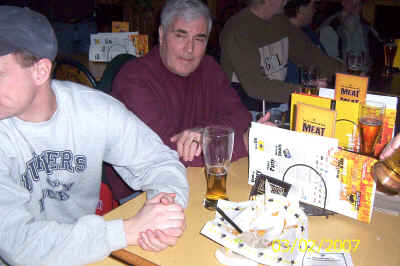 |
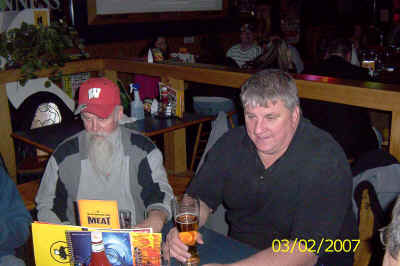 |
 |
 |
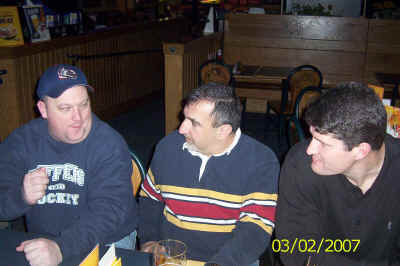 |
 |
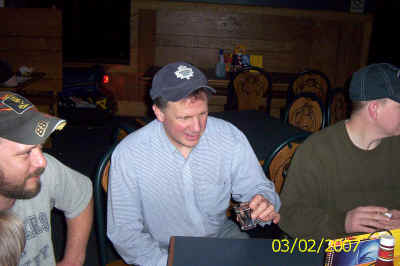 |
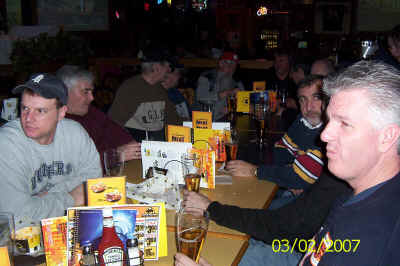 |
 |
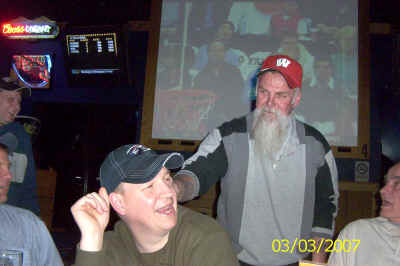 |
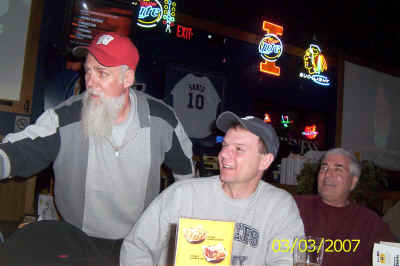 |
 |
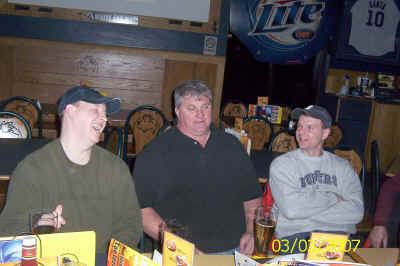 |
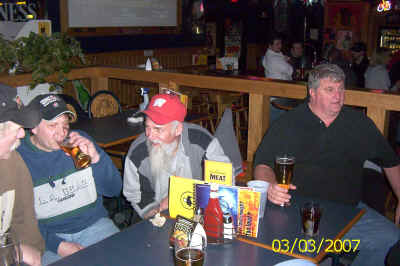 |
For more Wild Wing Pictures, Click Here
For Wild Wing Cartoons, Click Here
Go to Duffer News #255

copyrights and photograph owned by
Alaskan Arctic Adventures
The Bad Boys of Point Barrow.
North Slope Borough wildlife includes polar bears, grizzly bears, arctic
foxes, red foxes, caribou, moose, snowy owls, wolves, whales, beaver, Dall
sheep, bowhead whales, bearded seals, ringed seals, and spotted seals.
Next stop is Deadhorse
http://www.prudhoebay.com/communities_Deadhorse.htm
Prudhoe
Bay (Deadhorse) Alaska is home to the largest oil field in North America. It is
located in Ala ska
between the coast of the Beaufort Sea and the North Slope of the Brooks Range
Mountains. It is about 1200 mi. south of the North Pole and 250 mi. north of the
Arctic Circle. Arctic drilling rigs differ from their southern counterparts in
that they generally are more self contained. As is evident by the picture the
rigs are
ska
between the coast of the Beaufort Sea and the North Slope of the Brooks Range
Mountains. It is about 1200 mi. south of the North Pole and 250 mi. north of the
Arctic Circle. Arctic drilling rigs differ from their southern counterparts in
that they generally are more self contained. As is evident by the picture the
rigs are enclosed to protect it and the workers from the Arctic Winters. Many of the rigs
can be transported from drill site to drill site without any disassembly. Many
rigs have a camp house that moves with the rig to provide room and board for the
workers. Other wildlife in the area: Arctic
enclosed to protect it and the workers from the Arctic Winters. Many of the rigs
can be transported from drill site to drill site without any disassembly. Many
rigs have a camp house that moves with the rig to provide room and board for the
workers. Other wildlife in the area: Arctic  Fox,
Arctic Ground Squirrels, Grizzly Bears, Polar Bears, Musk OX, Arctic Hares,
Caribo u (Approximately 25,000)and over 200 different bird and waterfowl species
including geese, swans, seagulls and eagles . During the winter months only the
arctic fox, ravens, and the occasional polar bear are to be seen. Ice roads are
built during the winter months to reduce the damage to the environment for
access to remote drill sites. conditions need to be twenty below zero or less
for construction thus limiting exploration drilling to the
Winter months in most cases.
Fox,
Arctic Ground Squirrels, Grizzly Bears, Polar Bears, Musk OX, Arctic Hares,
Caribo u (Approximately 25,000)and over 200 different bird and waterfowl species
including geese, swans, seagulls and eagles . During the winter months only the
arctic fox, ravens, and the occasional polar bear are to be seen. Ice roads are
built during the winter months to reduce the damage to the environment for
access to remote drill sites. conditions need to be twenty below zero or less
for construction thus limiting exploration drilling to the
Winter months in most cases.
Longest
Day: 63 days, 23 hours, 40 min.
Official sunrise: 12:09 AM - on 20th of May
Official sunset:11:18 PM - on 22nd of July
Shortest
Day: 1 hour, 3 min.
Official sunrise: 11:42AM - 24th of November
Official sunset: 12:27PM - 24th of November
Longest
Night: 54 days, 22 hours, 51 min.
Official sunset: 12:27PM - 24th of November
Official sunrise: 11:18AM - 18th of January
Shortest
Night: 26 min.
Official sunset: 11:43PM - 19th of May
Official sunrise: 12:09AM - 20th of May
Highest Recorded Temperature: 83 degrees F. on 21st of June, 1991
Lowest Recorded Temperature: Minus 62 degrees F. on 27th of January, 1989
Highest Wind Speed Recorded: 95 knots (109 mph) on 25th of February, 1989
Official Lowest Wind Chill Factor: 28th of January,1989 - Temp of minus 54 degrees F and Wind speed of 31 knots (36 mph) - Gave a chill factor of minus 135 degrees F.
All copyrights to this image belong the
original owner. If you have any information about ownership of this image,
please e-mail us.
The Will Rogers and Wiley Post Monument, across from the state-owned Wiley
Post-Will Rogers Memorial Airport, was dedicated in 1982 to commemorate the 1935
plane crash that killed the humorist and the famous pilot. After a planned stop
15 miles south of Barrow, Post and Rogers took off again, but their plane
stalled and plunged into a river, killing them both. Two monuments now on the
National Register of Historic Places are located at the crash site. The monument
pictured above is not at the crash site and is located across from Barrow's
Wiley Post and Will Rogers Memorial Airport.
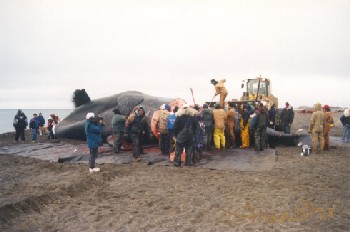 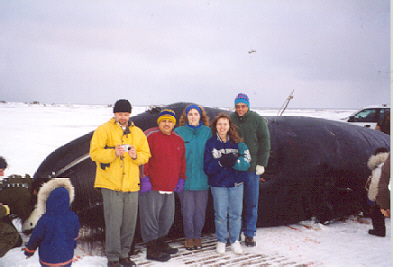
Spring whaling takes place in May and villagers celebrate Nalukataq in June and early July to note the end of whaling season. Each successful whaling team holds a Nalukataq celebration.
|
copyrights and photograph owned by the
King Eider Inn of Barrow Alaska
Many bird watchers travel to Barrow during this period to view some of the 250 plus bird species located in the area. Barrow is one of the top 5 birding spots in Alaska and the annual visitors to Barrow are spectacular. All four species of Eider ducks migrate along the coast and nest in the tundra around Barrow. Numerous other ducks and waterfowl also nest in the millions of small puddles and lakes across the tundra. Barrow is also prime habitat for many shorebirds. Perhaps the most spectacular summer visitor and breeder is the snowy owl, from which comes the Inupiat name for Barrow, Ukpeagvik, which translates to "place to hunt snowy owls".
Check out our king
eider and birding page.![]()
BARROW LINKS
Barrow Community Overview
Forbes
Magazine Article on Barrow
Alaska Business Monthly
Article
Alaska Airlines Site
Alaska Trip
Planner
Arctic Tours In Barrow
Arctic Slope Telephone Association
Barrow
Alaska Article
Barrow
Climatology
![]() Barrow
Birding Article
Barrow
Birding Article![]()
Barrow Birding Center
Barrow
Community Directory
Barrow Community Overview
Barrow
Economy, Employment & Income
Barrow
Facilities, Utilities & Services
Barrow
2000 Census Population
BARROW HOTEL ACCOMODATIONS
Alaska HotelsMotels - a
Travel and Tourism guide for Alaska
Barrow - I Love
Alaska!
Field Guides - Alaska
Birding Tours
High Lonesome Ecotours
of Barrow
Inupiat Heritage Center
Inupiat
of Arctic Alaska
Journey
North - Barrow Information
KBRW - Public Radio
KING EIDER INN of BARROW ALASKA
KING EIDERS &
BIRDING
Outside
Magazine Article on Barrow
Northern Alaska
Tours - Barrow
NWS
Current Barrow Weather Conditions
Wiley Post-Will Rogers
Memorial Airport
Places
to Stay in the Far North
![]()
Photographer
Jeffrey Sward's - Barrow Visit
SunJam Studios
- Authentic Alaskan Artwork
United States Alaska
Guide
OTHER TRAVEL LINKS
Discount Hotels - Discount Hotel
Reservations Worldwide
![]()
![]()
![]()